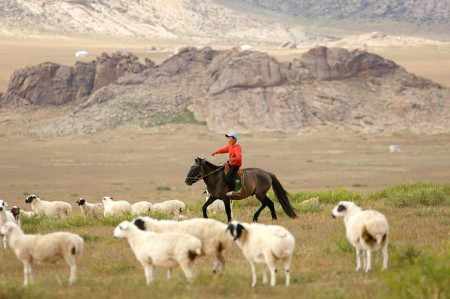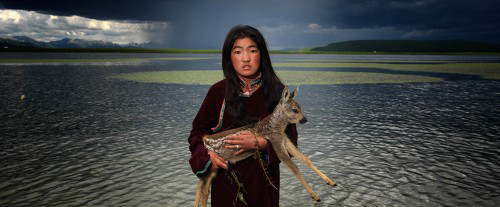


Much of the Rubin Museum’s programming concerns art from India, Nepal, and Tibet, but often the Museum turns its focus to other cultures from surrounding regions. Mongolia shares a strong bond with the cultures of the Himalayas through the influence of Tibetan Buddhism.
“Traditionally, Mongolians worshiped through shaman rituals,” explains Ariun Sanjaajamts, founder of Mongolia Connections consulting in New York City and a board member of the National Alliance of Mongolian Museums. “However, Undur Gegeen Zanabazar, Mongolia’s first Bogd Khaan (or king), played an important role in founding Mongolian Buddhism, adopted through Tibet in the sixteenth century.” Aside from his influence on religion, Ariun says the Bogd Khaan was “an extraordinary artist, sculptor, poet, and scholar. In the art world he has been named the Mongolian Michaelangelo.”

Many Westerners associate Mongolia with the great empire of Genghis Khan but often neglect its rich cultural heritage, like the contributions of Undur Gegeen Zanabazar and the nation’s continued significance to the world today. “Mongolia is probably the last frontier that keeps the nomadic lifestyle alive in the modern world,” says Ariun. “Though while half of the population still lives as nomadic herders in the countryside, the other half of the population lives in the very modernized city of Ulaanbaatar.”
With a culture that has always valued the balance between human life and nature, Mongolians continue to worship the “eternal blue sky” and “the mother earth.” Many mountains and lakes are sacred to the Mongolian people and there are many songs, folk tales, and poems dedicated to them. “Mongolia is famous for its horse fiddle music, throat singing, long songs, and beautiful ethnic dances,” says Ariun. “Mongolians are horse people and herders. Children start their horse riding around five years old—Mongolians are very family oriented and the women and men are both equally important in Mongolian society. All-in-all they are very hospitable, generous, sharing, and friendly people.”
Ariun acknowledges that it’s a challenge to convey the beauty and complexity of Mongolia to someone who knows little about the region. Fortunately there are places to experience Mongolian culture in cities like New York. When Ariun came to America a few years ago, she turned to museums to embrace her Mongolian heritage. “There was no other place I could find and relate to my community,” she says. “Since then I have been connecting museums to consult and co-organize cultural projects to promote Mongolian culture while engaging the Mongolian American community.”
Although the Mongolian American community is relatively small, Ariun recognized the value of sharing her heritage with Western audiences. “Especially for young Mongolian-Americans! It is important to be connected to their culture and yet still be part of the diverse American community. My organizing is just a start, but it’s the beginning of a bright future! “


Ariun Sanjaajamts, MBA, is the founder of Mongolia Connections, a consulting service in New York City, and an active promoter of Mongolian culture. She is also a board member of the National Alliance of Mongolian Museums and member of the American Alliance of Museums, implementing exchange programs between museum staff from Mongolia and the United States and developing museum management practices and educational programs.
Get the latest news and stories from the Rubin, plus occasional information on how to support our work.